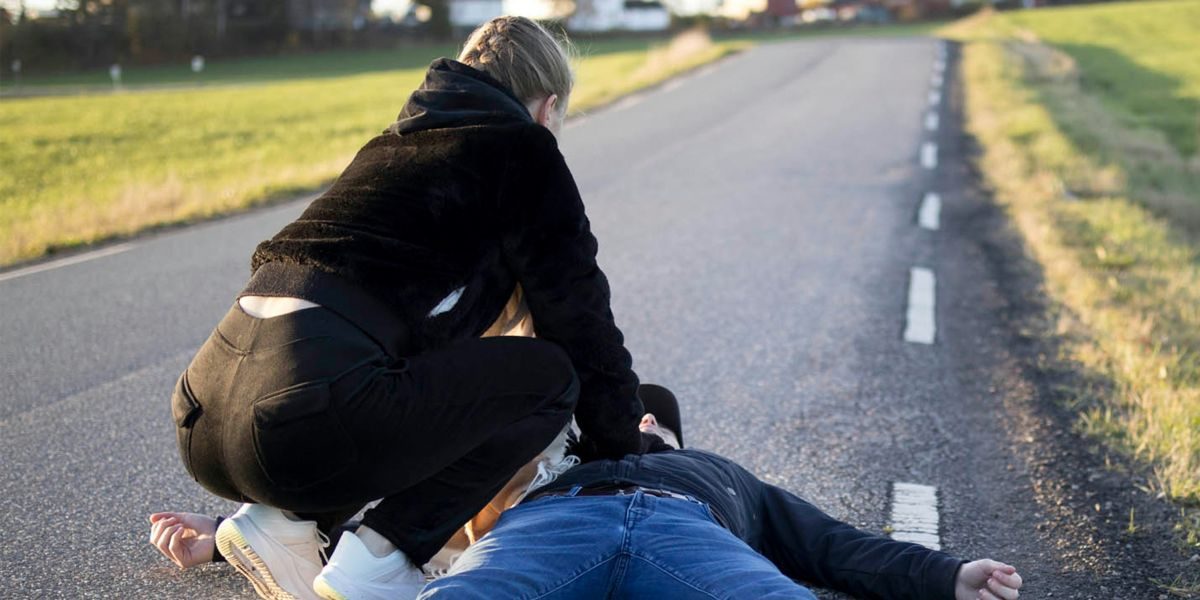Crosswalks help keep pedestrians safe by providing clear places to cross the street. However, in cities like Charleston, these areas don’t always prevent accidents. Drivers distracted by phones, rushing through yellow lights, or failing to follow signals can put lives at risk. When a pedestrian is hit, injuries can be serious, often leading to broken bones, head injuries, and long recovery times.
Many victims find it difficult to hold careless drivers accountable. Insurance adjusters may try to shift the blame, and legal issues can delay justice. This is why some victims seek the help of Tiano O’Dell pedestrian injury lawyers in Charleston. These experienced lawyers can offer guidance and work toward securing fair compensation for victims, navigating the legal process after crosswalk-related accidents.
Crosswalks Offer Legal Protection, Not Physical Safety
Pedestrians may have the legal right-of-way in crosswalks, but that doesn’t mean vehicles always yield. Even in clearly marked areas with signage and signals, many drivers still speed through intersections or fail to pay attention. In a city like Charleston, where foot traffic and vehicles often share narrow urban roads, even a brief moment of carelessness can result in a serious injury or fatality for someone crossing the street.
The law typically favors pedestrians in most crosswalk scenarios, but legal protections can’t physically stop a car. That means even if the pedestrian is fully in the right, they’re still vulnerable. This gap between legal protection and physical safety often results in complicated legal battles after an accident. Proving that the driver was negligent is just the beginning—victims must also navigate a system where factors like evidence, timing, and strong legal support play critical roles.
Injuries That Go Beyond the Surface
Pedestrian accidents can lead to serious physical injuries and emotional repercussions. Understanding these injuries is important for recognizing the challenges victims face and for obtaining the necessary legal and medical support.
Common physical injuries:
- Broken bones and fractures, often requiring surgery and extended immobilization
- Spinal cord injuries that may lead to partial or complete paralysis
- Traumatic brain injuries, including concussions and long-term cognitive effects
- Internal organ damage and internal bleeding that may not be immediately noticeable
- Long-term rehabilitation needs, including physical and occupational therapy
Emotional and psychological impact:
- Post-traumatic stress disorder (PTSD), particularly if the incident was sudden or violent
- Anxiety and depression that affect daily life
- Loss of confidence or independence, such as a fear of walking in public
- Social withdrawal or isolation during recovery
Why Liability Isn’t Always Clear-Cut
Even when a pedestrian is hit in a marked crosswalk, determining fault isn’t always straightforward. Drivers may claim the pedestrian darted out or crossed against the signal. Without reliable witnesses or video footage, it can devolve into a “he said, she said” situation—something insurance companies may take advantage of.
West Virginia’s comparative fault law adds another layer of complexity. If the victim is found partially at fault—even by a small percentage—their compensation may be reduced accordingly. This makes it all the more important to build a solid case, supported by medical evidence, traffic reports, expert testimony, and witness statements. A knowledgeable legal team can help ensure liability is correctly assigned and prevent the success of blame-shifting tactics.
The Insurance Company Is Not Your Advocate
It’s common for insurance companies to reach out soon after a pedestrian accident with offers that seem helpful. They may even propose a quick settlement to cover medical bills or lost wages. But in many cases, these early offers fall short of what victims need to recover fully.
Insurance adjusters are often trained to minimize payouts and protect their company’s interests. They might downplay the severity of injuries, claim that the pedestrian was partly to blame, or argue that ongoing treatments are unnecessary. Without a legal advocate challenging these tactics, victims may end up with a settlement that doesn’t account for future medical care or lost earning capacity.
Evidence Is Crucial in a Pedestrian Accident Claim
In any pedestrian accident case, evidence plays a central role in determining fault and establishing how much compensation the victim should receive. Photos from the accident scene, medical records, traffic camera footage, and witness statements can all help strengthen a case. The more thorough the evidence, the more difficult it becomes for insurers or defendants to downplay the impact of the crash.
Timing is also critical when gathering evidence. Traffic footage may be erased quickly, and memories can fade fast. That’s why it’s important for legal professionals to begin investigations as soon as possible, securing key documentation before it’s lost. Strong evidence not only helps strengthen a case but also ensures the settlement truly reflects the severity of the injuries and losses involved.
Financial Recovery Goes Beyond Medical Bills
Many people assume that compensation for pedestrian accidents only covers hospital bills and immediate treatment. In reality, a well-rounded legal claim can account for a variety of damages. These can include lost wages, future medical care, rehabilitation, assistive devices, home modifications, emotional suffering, and a reduced quality of life.
Victims should not be expected to shoulder the financial burden of someone else’s negligence. A comprehensive damages assessment can help ensure that both short-term and long-term needs are covered. Attorneys work with medical and financial experts to project future expenses and justify every dollar being claimed—an approach that can make a meaningful difference in achieving a fair result.
Timelines Matter: Understanding the Legal Deadline
In West Virginia, the statute of limitations for filing a personal injury claim is two years from the date of the pedestrian accident. While this may seem like plenty of time, delays in seeking legal help can have consequences. Evidence can disappear, witnesses can become difficult to find, and paperwork can become harder to organize the longer you wait.
Acting quickly is especially important in pedestrian accident cases, where early intervention can strengthen every aspect of the claim. Legal professionals can begin preserving evidence, communicating with insurers, and building a case immediately. Waiting too long not only weakens your position, but could also prevent you from filing a lawsuit altogether.
How the Right Lawyer Can Make a Difference
After a pedestrian accident, choosing the right lawyer is a crucial decision. An attorney who is familiar with pedestrian law, Charleston’s traffic patterns, and insurance industry strategies can help level the playing field and ensure your side of the story is heard. They’ll understand how to navigate complex legal systems while protecting your rights at every step.
With the right representation, victims can focus on healing while their legal team handles the heavy lifting. From negotiating with insurers to presenting a strong case in court if needed, having an experienced advocate can improve the chances of a favorable outcome. When your walk through a crosswalk ends in an unfortunate accident, justice begins by taking that first legal step.
Disclaimer: The content in this article is for informational purposes only and does not constitute legal advice. The information provided is general in nature and may not apply to individual cases. Always seek professional advice for your specific legal circumstances.

















